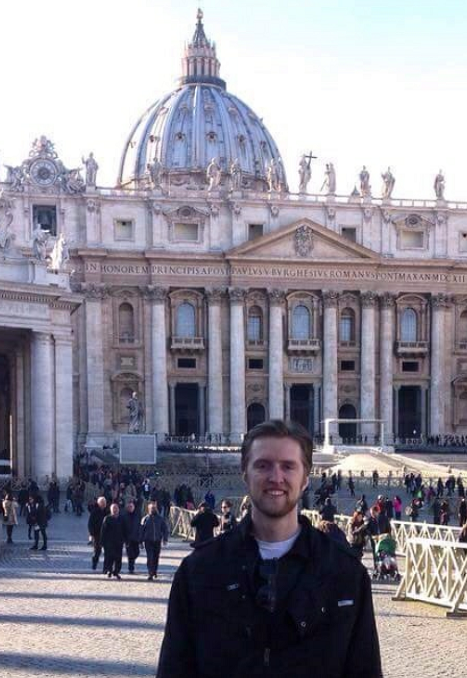The Third Avenue Bridge and the Stories It Holds
 Sunday, January 3, 2021 at 2:36PM |
Sunday, January 3, 2021 at 2:36PM |  Michael Rainville Jr |
Michael Rainville Jr | Article by Michael Rainville, Jr.
On January 4th 2021, the Third Avenue Bridge has closed for repairs for just the second time in its history. Since its opening in June of 1918, Minneapolis has made it a point to give the bridge attention when it desperately needs it. 103 years later, and this still rings true. While this historic bridge will be closed for nearly two years, the repairs and enhancements will allow us to enjoy one of Minneapolis’ riverfront landmarks for the next fifty years.

1917 photo of the bridge under construction.
 Photo of the newly completed bridge from 1918.
Photo of the newly completed bridge from 1918.
In a city where bridges are vital for commerce and leisure, it was very important for Minneapolis to adapt to transportation advancements, such as the introduction of automobiles and streetcars. The Lower Bridge, or Old Tenth Avenue Bridge, was not built to handle the weight of cars and large trucks, so plans were put in place to construct a new bridge that will connect the central riverfront. With Central Avenue turning into a business and cultural hub, the city planned to connect Central Avenue on the east side of the Mississippi River to Third Avenue on the west side.
Frederick Cappelen, the City Engineer for Minneapolis who also designed the Prospect Park Water Tower, was tasked with the project. This was a challenge not only because Central Avenue and Third Avenue do not align with each other, but also the rock formation that makes up St. Anthony Falls was weakened from a previous tunneling venture gone bad forty-five years prior. This lead Cappelen to design the bridge in a reverse s-curve shape, which made it the longest of its kind in the world, a title it still holds. Other features of Cappelen’s bridge that give it its iconic look are the seven Melan arches with open spandrels and Classical Revival ornamentation on the pilasters and piers. When the project was completed in June of 1918, it cost $862,254, or roughly $14.86M after inflation. Originally, the bridge was known as the St. Anthony Falls Bridge, but over the years, that name fell out of favor.
 1940
1940
 1965
1965
In 1939, ornamental metal and concrete railings were added, but the first major renovation came in the late 1970s. The bridge was in very rough shape and all signs pointed to demolition. Officials were adamant about keeping the bridge, and in order to achieve that, everything above the arches was replaced. The newly improved Third Avenue Bridge opened in November of 1980, and four years later, Prince included an homage to the bridge when filming his movie Purple Rain.
The easier and cheaper thing to have done in 1978 would have been to demolish the old bridge and build a more modern version. Thankfully, city officials thought it would be best to keep the historical aspects of our riverfront as it transitioned from heavy industry to some of the best parkland in the world. The landmarks of our riverfront - the Stone Arch Bridge, Pillsbury A-Mill and Mill City Museum - aren’t just cool to look at, they contribute to our identity, our story, no matter how big or small.
In fact, eighty-eight years ago to the day, January 4th, 1933, the Third Avenue Bridge was a getaway route for quite a few robbers. The headline of the Wednesday issue of the Minneapolis Star read “Rob Mail of $100,000 Cash. Three Forces of Detectives Hunt Bandits.” Eight gunmen smoothly stole three registered mail pouches from the Milwaukee Depot, jumped into two cars, and made their way across the Third Avenue Bridge. Reports say they then took a right turn onto University Avenue and sped off towards Saint Paul, a known safe haven for gangsters during this era. The Minneapolis Police Department, the United States Postal Inspection Service, and the Milwaukee Railroad Special Police were unable to track down the bandits and the estimated $175,000 they stole, which is over $3.5M after inflation. Quite the haul. It’s little stories like this one that are saved from being lost to time with the preservation of our own historical landmarks.
 Rendering of the current project from MnDOT
Rendering of the current project from MnDOT
Forty years after the first shut down and the Third Avenue Bridge has closed once again for repairs and restoration. The work being done isn’t just mending what needs to be fixed. Lighting on the bridge deck will be improved, the railings, pilasters, and spandrels will receive a historic facelift, and the sidewalks will expand into thirteen-foot multi-use paths. If everything goes to plan, this smoother, safer, historic bridge will reopen to the public in summer of 2023 - ready for more stories to be made and remembered.
- - - - - - - - - - - - - - - - - - - - - - - - - -
 About Michael Rainville, Jr.
About Michael Rainville, Jr.
A 6th generation Minneapolitan, Michael Rainville Jr. received his B.A. in History from the University of St. Thomas, and is currently enrolled in their M.A. in Art History and Certificate in Museum Studies programs. Michael is also a historic interpreter and guide at Historic Fort Snelling at Bdote and a lead guide at Mobile Entertainment LLC, giving Segway tours of the Minneapolis riverfront for 7+ years. Contact: mrainvillejr@comcast.net. Click here for an interactive map of Michael's past articles.
